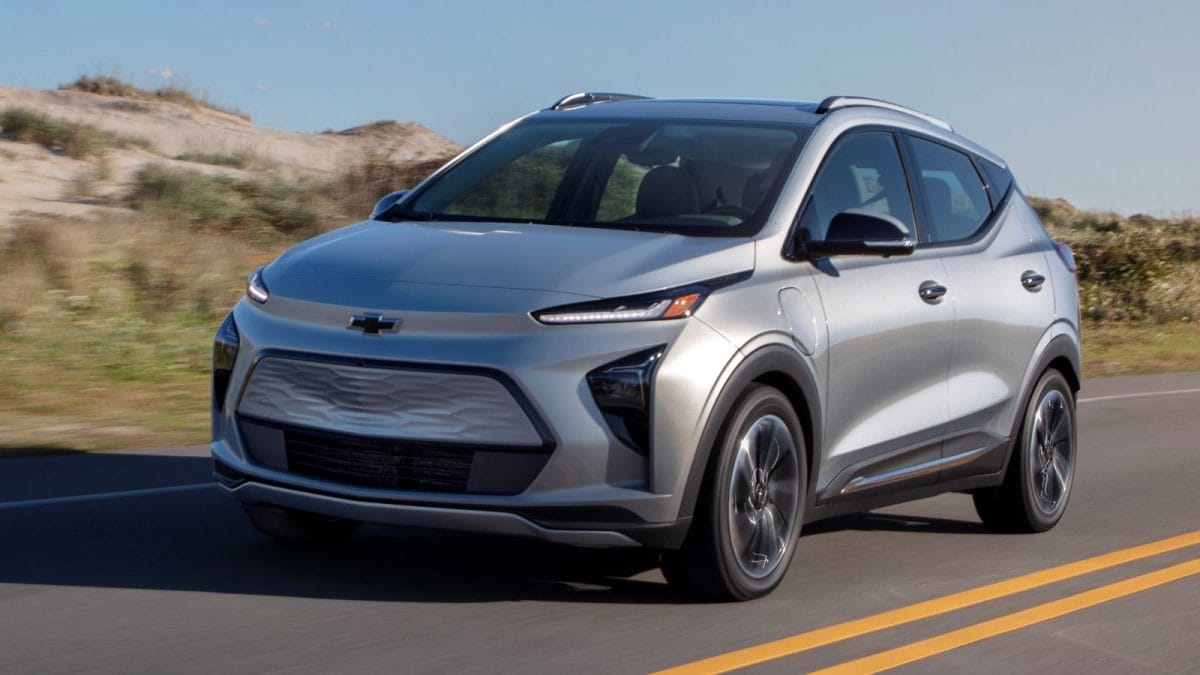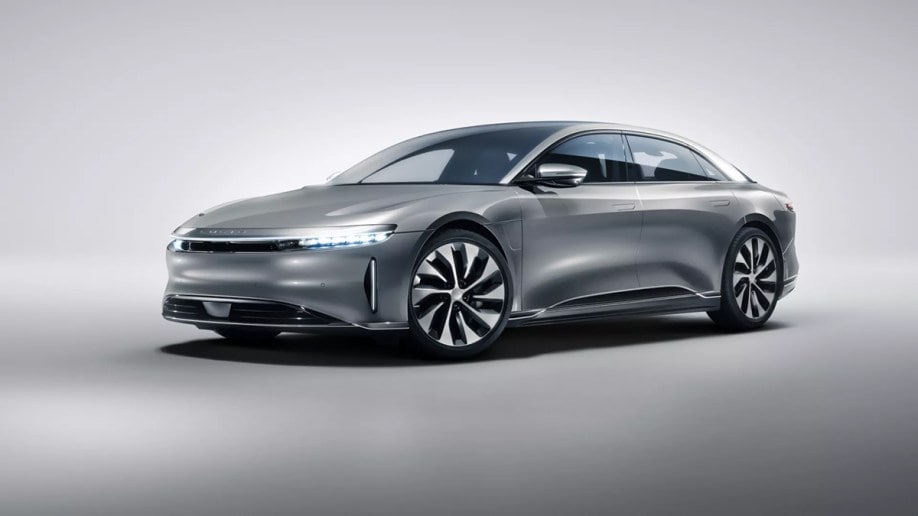Quick Facts About MPGe
- MPGe, or “miles per gallon equivalent,” is the unit of measurement for an electric car’s energy consumption level to compare with gas-powered vehicles’ fuel consumption.
- A good MPGe rating means an EV makes efficient use of its electrical power and doesn’t necessarily mean it has the best electric range.
- A gas-powered car earning 35 miles per gallon is considered to be great. EVs can get 100 MPGe with ease.
If you’ve shopped for an electrified car, you likely encountered a term in the car specs or on the window sticker and wondered, “What is MPGe?”
Let’s take a deep dive into MPGe to explain what it is and how to use the number. These measurements will become much more prevalent as hybrids, plug-in hybrids (PHEVs), fully electric cars (EVs), and fuel-cell vehicles become the new normal.
- What Does MPGe Mean?
- How Is MPGe Calculated?
- MPGe vs. MPG
- Electric Cars With the Best MPGe
- MPGe Misconceptions
What Does MPGe Mean?
MPGe stands for “miles per gallon of gasoline equivalent” and it is a measurement of fuel efficiency for hybrid and electric cars. Unlike a gas car’s mpg, which is calculated using a simple formula, such a figure is not obtainable when a battery from a hybrid, plug-in hybrid, or fully electric vehicle uses electricity as its fuel source.
That’s why the Environmental Protection Agency (EPA) introduced in 2010 the unit of measurement for the electric car’s energy consumption level to compare with gas-powered vehicles. MPGe helps consumers gauge the relative efficiency of EVs versus cars with combustion engines.
Every window sticker at the dealership (see the example above for the 2022 Kia EV6 GT Line) is federally mandated to show the MPGe when it’s an electrified car or mpg when it’s a gas-fueled vehicle.
MORE: Electric Cars 101: What You Need to Know About EVs
How Is MPGe Calculated?
A car that uses 33.7 kilowatt-hours (kWh) of electricity to travel 100 miles rates 100 MPGe. When the EPA devised MPGe in the early 2000s, the government agency calculated that 33.7 kWh of electricity was comparable to a gallon of gasoline fuel in terms of its energy content.
True, pulling 33.7 kWh of electricity from the grid in a place dependent on coal power is not quite the same as using wind power. However, such an average makes for a more reasonable comparison that is applicable to drivers.
This is simple enough for fully electric cars that do not contain an internal combustion engine. The math gets trickier for a PHEV such as a Chrysler Pacifica Hybrid or a Toyota Prius Prime. These vehicles use an MPGe rating when driven on electric power only, with conventional mpg ratings applying once their batteries are depleted and their gas engines kick on.
MPGe is an important way to compare how efficient an electrified car is because it is linked directly to how much it costs to charge the vehicle and how much power the EV needs to draw from the grid to top off its battery.
MORE: 10 Best Electric Car Deals
MPGe vs. MPG
When it comes to MPGe for electric vehicles and mpg for gasoline-powered cars, they might seem very similar. But there’s a big difference between the two.
The formula for MPGe can be calculated as follows: 33.7 kWh of electricity = one gallon of gas. Some cars can get 100 MPGe. However, this can be misleading if you’re looking at this number for how much money you will be spending on fill-ups. It would be more accurate to look at the car’s 5-Year Cost to Own and calculate how much your home electricity bill would be.
On the flip side, mpg is the gas equivalent to electric power. This number can be significantly lower than that of electrified cars. A car with 35 miles per gallon is considered great, but EVs can easily get 100 MPGe.
The miles-per-gallon formula works like this: Miles driven divided by gallons used = mpg. This mpg formula is much easier to understand.
MORE: Safest Electric Cars of 2024
Battery-Powered Electric Cars With the Best MPGe
Expect this list to change rapidly over the next few years as fully electric vehicles become more common and advancements in battery technology make them more energy-efficient.
Here is a chart listing EVs with the best MPGe ratings, their estimated annual fueling cost (using an electricity rate of 15 cents per kWh and a 15,000-mile annual estimate), and their estimated electric range, according to EPA figures.
| 2024 Model | MPGe | Annual Fuel Cost | Range |
| Hyundai Ioniq 6 Long Range RWD (18-inch wheels) | 140 | $550 | 361 miles |
| Lucid Air Pure RWD (19-inch wheels) | 137 | $550 | 419 miles |
| Tesla Model 3 Long Range AWD | 130 | $600 | 342 miles |
| Lexus RZ 300e (18-inch wheels) | 125 | $600 | 266 miles |
| Tesla Model S | 122 | $600 | 402 miles |
| Telsa Model Y Long Range RWD | 120 | $650 | 320 miles |
| BMW i4 eDrive35 Gran Coupe (18-inch wheels) | 120 | $650 | 276 miles |
| Toyota bZ4X | 119 | $650 | 252 miles |
| Hyundai Kona Electric Standard Range | 118 | $650 | 200 miles |
| Kia EV6 Long Range RWD | 117 | $650 | 310 miles |
| Fiat 500e | 116 | $650 | 149 miles |
| Polestar 2 Single Motor (19-inch wheels) | 115 | $650 | 320 miles |
| Ioniq 5 Long range RWD | 114 | $700 | 303 miles |
| Kia Niro EV | 113 | $650 | 253 miles |
| Volkswagen ID.4 Pro | 113 | $650 | 291 miles |
| Genesis GV60 Standard | 112 | $700 | 294 miles |
| Nissan Leaf | 111 | $700 | 149 miles |
| Chevrolet Equinox EV FWD | 108 | $700 | 319 miles |
MPGe Misconceptions
To be clear, good MPGe ratings don’t necessarily mean the best electric range. And MPGe is not tied directly to a vehicle’s speed or performance capability. Instead, a high MPGe rating shows that a car makes the best use of its electrical power.
MPGe does not offer a direct and accurate cost comparison because your mileage results will vary due to many factors, no matter what kind of fuel the vehicle uses.
For the 2024 model year, a new EV’s window sticker shows an estimated annual electric cost based on a figure nearly 2 cents per kWh less than the current national average residential rate. The cost of a kWh varies considerably by region and whether you charge the electric car at home or a public charging station. The basic rule of thumb is this: Vehicles with a higher MPGe are more efficient than those with lower MPGe numbers.
Kelley Blue Book factors such information into its Total Cost of Ownership comparisons, which is helpful when evaluating how much a vehicle will cost an average driver over five years.
Editor’s Note: This article has been updated since its initial publication.










